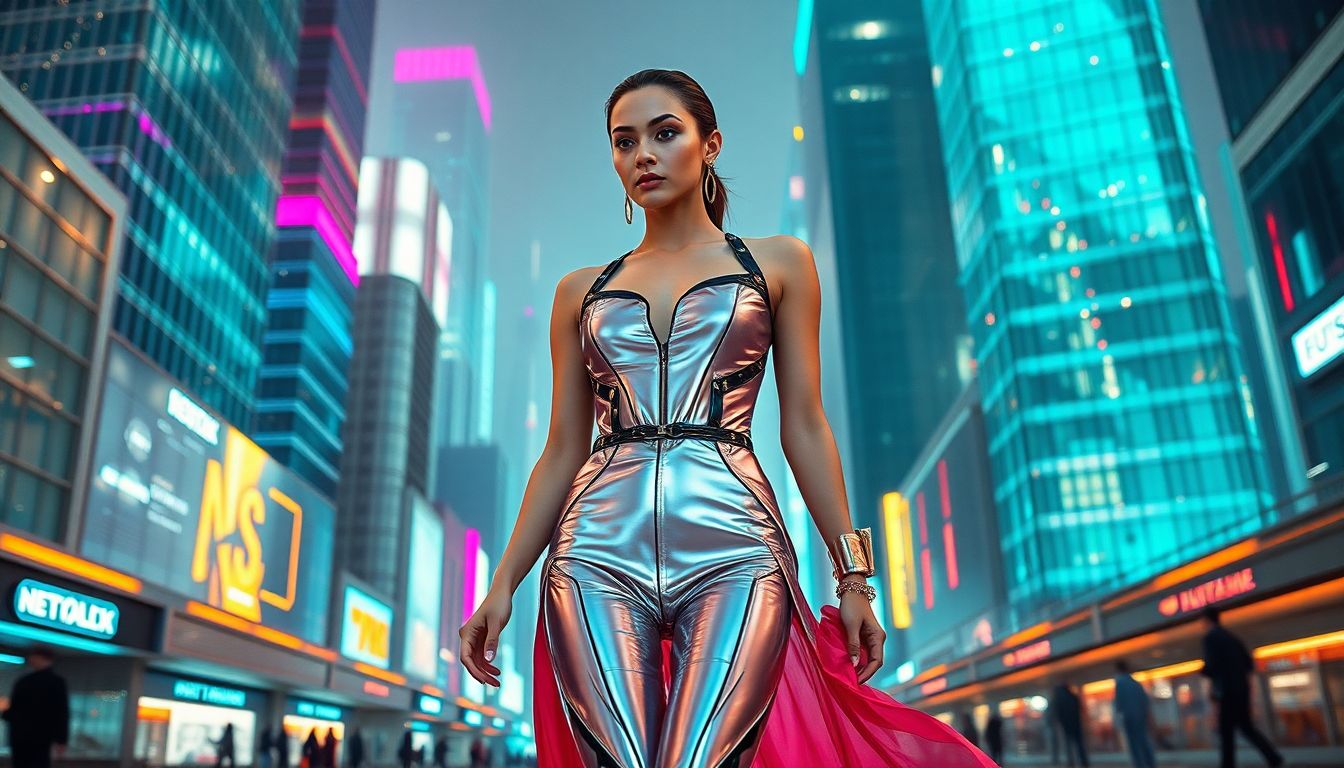
Fashion is always shifting, and 2025 is set to bring exciting changes. The influence of sustainability and technology will shape the industry as it evolves. As we look ahead, a blend of classic and modern styles, alongside new tech innovations, will define what we wear.
The Rise of Sustainable and Ethical Fashion
Eco-conscious Materials
Brands are increasingly using sustainable fabrics. This includes recycled materials, organic cotton, and innovative plant-based alternatives. The sustainable fashion market is projected to grow significantly—expected to reach $8.25 billion by 2025. Eco-focused labels like Reformation and Eileen Fisher are paving the way.
Transparency and Traceability
More brands are putting transparency front and center. Shoppers want to know where their clothes come from and who made them. Some brands are using blockchain technology to track their supply chains, like Ever ledger. This shift helps consumers make informed purchasing decisions.
Circular Fashion Initiatives
Circular fashion is gaining traction with clothing rental services and upcycling initiatives. A recent study shows that 62% of consumers are interested in clothing swaps or rentals. Brands like Rent the Runway and Thred Up are leading this movement, providing eco-friendly options for fashion lovers.
Tech-Infused Fashion: Wearable Technology and Beyond
Smart Clothing and Accessories
Fashion is becoming tech-savvy. Smart clothing with wearable sensors and embedded electronics is on the rise. Companies like Levi's and Google have already introduced jackets that can control your phone. This innovation provides not just style but functionality.
Virtual Fashion and the Metaverse
The concept of virtual fashion is gaining momentum. As the metaverse market grows, digital clothing becomes more relevant. In 2022, the metaverse was valued at $47 billion, and this number is set to soar. Virtual designers are creating clothing that exists only online, catering to a new generation of fashion enthusiasts.
Personalized Fashion Experiences
Technology now allows for personalized fashion recommendations. Companies like Stitch Fix and Thread use AI to suggest styles based on individual preferences. This level of customization is changing how consumers shop, making the experience more enjoyable and unique.
Redefining Gender Fluidity in Fashion
Unisex Styles and Gender-Neutral Clothing
Unisex clothing lines are becoming mainstream. This trend reflects a shift away from traditional gender norms. Brands such as Telfar and Asos are known for their gender-neutral designs, appealing to a broader audience.
Inclusive Sizing and Body Positivity
Fashion is becoming more inclusive with diverse sizing options. Consumers are increasingly demanding body positivity and representation. Brands like Aerie and Savage X Fenty are championing this cause, making their marketing and design more relatable.
Challenging Traditional Gender Norms
Designers are pushing boundaries with bold choices. Collections that mix masculine and feminine elements challenge societal norms. This movement is reshaping expectations about what fashion should look like.
The Return of Classic Styles with a Modern Twist
Elevated Basics and Timeless Pieces
Classic clothing items are making a comeback, but with a modern twist. Staples like trench coats and tailored blazers are being reimagined. Brands like COS and Everlane are leading this trend with elevated basics that resonate with today’s audience.
Vintage-Inspired Trends
Retro styles are returning to the runway. Fashion from the ‘70 and ‘90 is influencing current trends. Think oversized denim jackets, high-waisted jeans, and chunky sneakers. This nostalgia offers a fresh take on old favorites.
Refined Minimalism
Minimalist style continues to hold appeal in 2025. The emphasis on clean lines and simple silhouettes is growing stronger. Designers like Jil Sander and The Row focus on refined minimalism, making it a staple for those who appreciate understated elegance.
Bold Colors and Prints: A Celebration of Individuality
Vibrant Hues and Unexpected Color Combinations
Bold color palettes are defining upcoming trends. Expect to see vibrant shades and unusual combinations. Colors like electric blue and neon green will dominate collections. Designers known for their daring color choices, such as Gucci and Versace, are key players here.
Statement Prints and Patterns
Unique prints are essential for expressing individuality in fashion. From florals to geometric designs, patterns are making waves. Influential designers like Dolce & Gabbana and Etro are known for their innovative print work.
Accessorizing for Impact
Accessories will play a vital role in completing bold looks in 2025. Statement jewelry and distinctive bags can transform an outfit. When accessorizing, consider mixing styles and colors to make a striking statement.
The Power of Comfort and Functionality
Athleisure's Continued Dominance
Athleisure maintains its popularity as comfort remains a top priority. The athleisure market is expected to rise to $257 billion by 2024. Brands like Lululemon and Nike are innovating, creating stylish yet functional workout wear.
Comfortable yet Stylish Silhouettes
Fashion is merging comfort with stylish designs. Loose-fitting tops and relaxed trousers are becoming standard fare. Brands like Free People and Uniqlo cater to this demand with chic, comfortable options.
Practical and Versatile Garments
Versatile clothing is appealing for various occasions. Items that adapt from day to night offer practicality. Building a wardrobe with these essentials simplifies dressing and enhances style choices.
Conclusion
In summary, the fashion landscape for 2025 promises a blend of sustainability, tech innovations, and inclusivity. As brands adapt to consumer demands, creativity will flourish. What are your predictions for the future of fashion? Share your thoughts and ideas in the comments!
%20(4).jpeg)